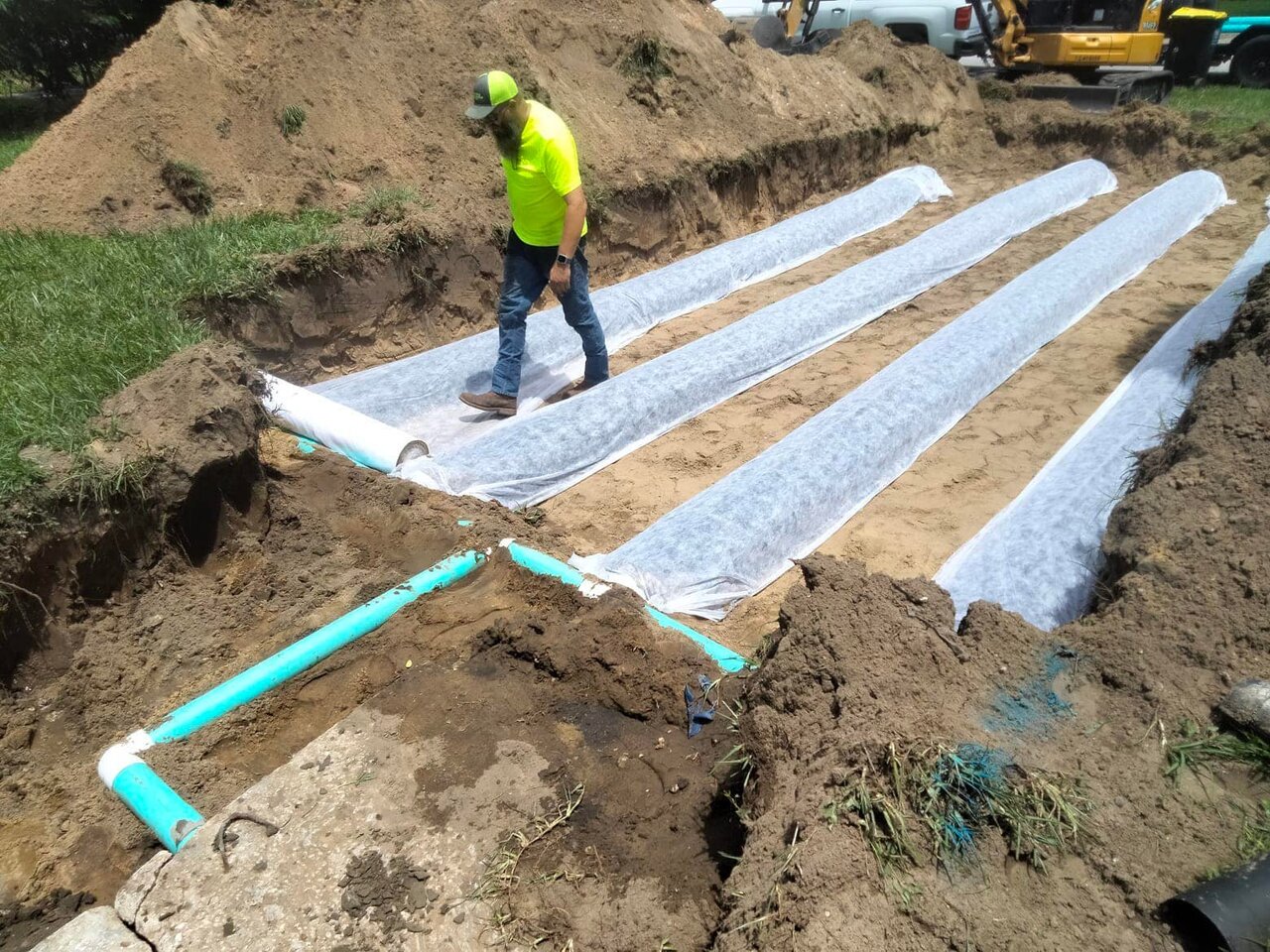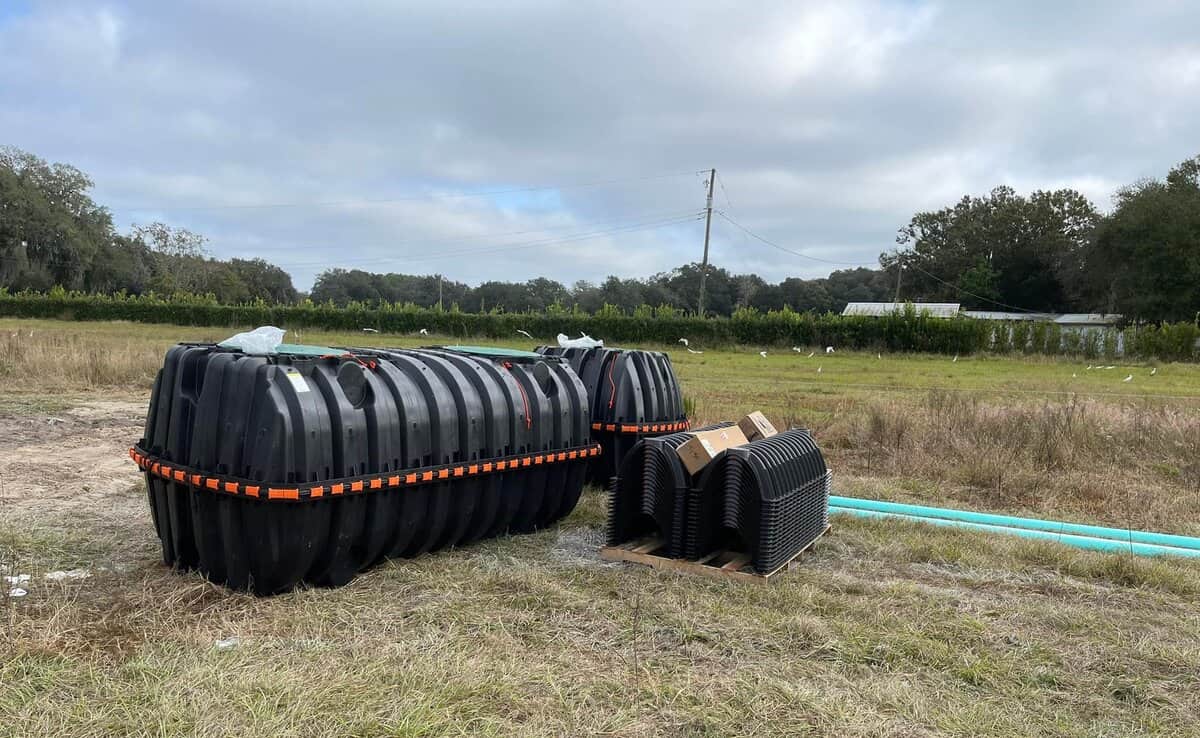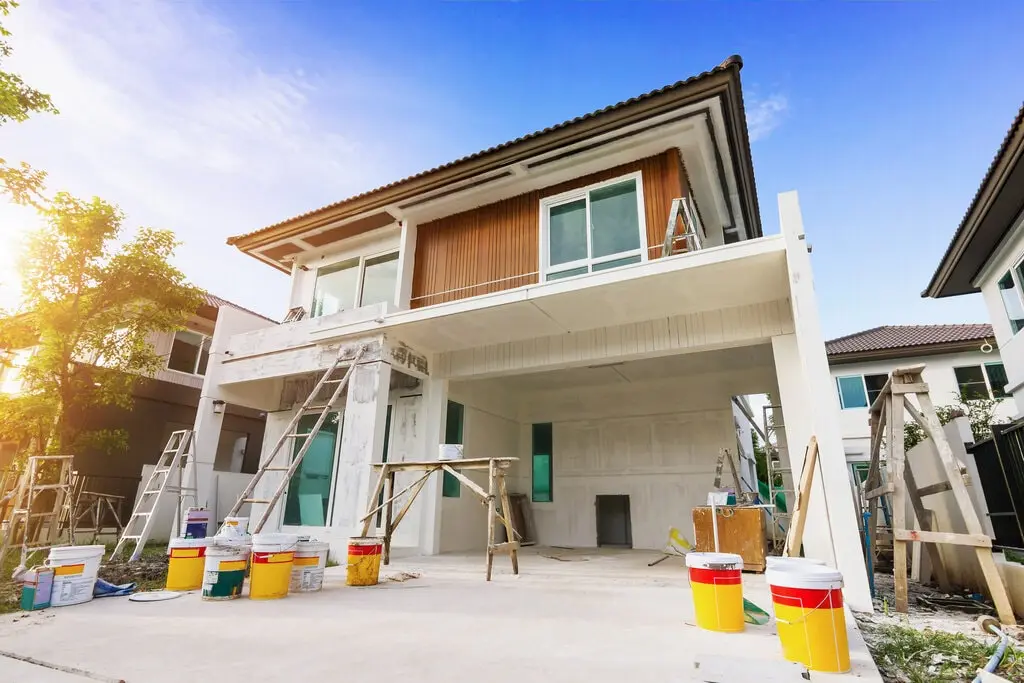Septic systems are an important part of many residential properties, and proper care and maintenance are necessary to keep them running smoothly. One of the most important components of a septic system is the drainfield, which removes contaminants from wastewater before it reenters the environment.
What Is a Drainfield?
A drainfield, sometimes called a leach field, is the last stop for the wastewater from your home before it reenters the environment. The drain field removes any remaining contaminants by allowing the wastewater to slowly trickle through the soil, where it is then absorbed and broken down by bacteria.
The way a drainfield works is actually fairly simple. Wastewater enters the drainfield through a series of small perforated pipes. The pipes are laid out in a grid pattern over an area of land, and the soil above them is packed down to keep the wastewater from seeping away.
As the wastewater flows through the perforated pipe, it comes into contact with the soil, which breaks down any remaining contaminants. The water then slowly seeps down through the soil and is absorbed by the groundwater below. From there, it is broken down even further by bacteria before entering back into the environment.
It is important to note that not all wastewater will be absorbed by the soil. Some of it will evaporate into the air, and some will run off into surface water. That is why it is important to have a drainfield that is large enough to handle the amount of wastewater your home produces.
If you are not sure if your drainfield is in the right place or if it is sized correctly, contact a septic system specialist for help. They can assess your system and make any necessary adjustments to ensure that your wastewater is properly treated before entering back into the environment.
Types of Drain Fields
There are two main types of drainfields: Absorption trenches and leaching beds.
- Absorption trenches are long, narrow trenches that are filled with gravel and allow wastewater to seep through the soil.
- Leaching beds are raised beds that have a drainage layer on top and a soil infiltration layer below.
Both types of drainfields have their pros and cons, so it is important to consult with an expert before deciding which one is right for your property.
Factors to Consider When Choosing a Drainfield Location
Just as with deciding on the best location for a septic tank, choosing where to locate your drainfield is an important decision that is best left to contractors who are experienced with providing septic services. The best place for your drainfield installation will vary depending on your individual property, but here are a few things you should keep in mind when choosing a location:
- The slope of your land – The drainfield should be installed on level ground or with a slight downward slope so that the wastewater can flow freely. If the ground is not level, the wastewater will not disperse evenly and could cause problems with your septic system.
- Soil type – The soil should be able to absorb water and allow the wastewater to seep through to the groundwater. Sandy soils are good for drainfields, while clay soils are not. PERC (Percolation) testing is done as part of the drainfield site selection process to determine how well the soil will absorb water. The test is conducted by drilling a hole in the ground and filling it with water. The time it takes for the water to seep through the soil is measured, and this provides an idea of how well the soil will handle wastewater.
- Distance from water sources – Designing a septic system requires taking into account a number of factors concerning septic distances. For instance, one of the considerations in determining the location of the septic tanks is that there is a minimum distance between the septic tank and a well. Similarly, the drainfield should be located a safe distance from any bodies of water, such as ponds, creeks, and wells so there is no inadvertent contamination. Regulations vary by state, but a general rule of thumb is to keep the drainfield at least 100 feet away from wells and 500 feet away from bodies of water.
- The location of your septic tank – The drain field should be located as close to the septic tank as possible.
- Obstacles – Avoid putting your drain field near trees or other obstacles. The roots from nearby trees could clog the drain field and prevent it from working properly.

Choosing the right location for your drainfield is critical for ensuring that your septic system operates safely and efficiently.
For homeowners who have a septic system but are unsure of the location of the drainfield, a septic systems records search might be helpful in locating the tank and the leach bed.
How to Keep Your Drainfield Functioning Properly
Here are a few tips for keeping your drainfield functioning properly:
- Keep the area around the drainfield clear of weeds and brush.
- Regularly inspect the surface of the soil for any signs of oversaturation.
- Avoid driving or parking on the drainfield.
- Do not build structures like decks or sheds on top of the drainfield.
- Landscaping over septic drain fields should include only smaller plants with shallow root systems, since the roots from large trees or bushes can cause problems.
What Are Signs of Drainfield Problems?
If you are having problems with your septic system, there is a good chance that the drain field is the culprit. Symptoms of drainfield problems include:
- Wastewater backing up into your home or buildings
- Water flowing out of the drains in your house or buildings slower than it should
- A foul odor coming from your drains
- Wet spots or depressions in your yard
- Sewage bubbling up in ponds or ditches near your property
If you are experiencing any of these symptoms, it is important to call a professional right away to diagnose and fix the problem. Ignoring the problem could cause more serious damage to your septic system and could even lead to a total system failure.
Septic and Drainfield Depot
If you are considering installing a new septic system on your property, make sure to consult with Septic and Drainfield Depot about the best location for your drainfield. Our experienced team of septic professionals can ensure that your septic system is designed to function properly, protecting your family and the environment.
Our drainfield services include not only installation, but also drainfield repair.
Contact us today for a free estimate.







